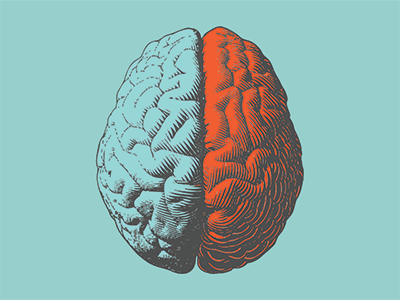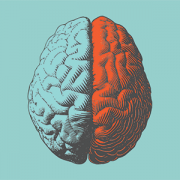Children use both brain hemispheres to understand language

New research finds young children process language in both hemispheres of the brain, which could help compensation after a neural injury. This is unlike adults who process most language tasks in one side (usually the left) of their brain’s two hemispheres. It suggests a possible reason why children often seem to recover from brain injury more easily than adults.
New research finds young children process language in both hemispheres of the brain, which could help compensate after a neural injury. The study, published Sept. 8, 2020, in PNAS, says this is unlike adults who process most language tasks in one side (usually the left) of their brain’s two hemispheres. It suggests a possible reason why children often seem to recover from brain injury more easily than adults.
We talked with researcher William D. Gaillard, M.D., chief of the Divisions of Child Neurology, Epilepsy and Neurophysiology at Children’s National Hospital, to discuss the importance of this work.
Q: Tell us a little bit about this study.
A: This is a study we did with our colleagues at Georgetown University Medical Center, using fMRI to map brain regions that are used to process language across development. What we found was that younger children have more bilateral “activation” in language processing regions, the traditional left and homotopic regions in the right. With aging there is consolidation that becomes more left lateralized. This process is most clearly seen in the frontal brain regions, called Broca’s area, where the right activation diminishes over age
Q: Why are these findings important?
A: It’s important because this work provides evidence for how cognitive systems, and the neural networks that underlie them, become consolidated and lateralized over time during development. It provides insights into principles of the development of cognitive systems.
The timeline for lateralization of language systems means that the cognitive systems that sustain language are “plastic” – that is the right hemisphere can sustain language functions in the setting of injury to the left hemisphere until around 10 years of age.
Q: What excites you about this work?
A: This is part of a larger collaborative effort that is mapping out the consolidation of cognitive systems across development (language, visual spatial, memory and working memory). This work will help us to understand the limits of brain plasticity in the setting of injury caused by stroke or epilepsy, which could have benefits down the road to helping patients recover from these types of events.
Q: How is Children’s National leading the ongoing discovery in this space?
A: It is a true team effort. We are working with colleagues at Georgetown University Medical Center, MedStar National Rehabilitation Network and Johns Hopkins Medicine. Team members come from diverse backgrounds and scientific skills. We are one of the leading groups using advanced functional imaging to investigate brain development of critical cognitive systems and their response to brain injury.
You can find the full study published in PNAS. Learn more about the Children’s National Research Institute Center for Neuroscience Research.





